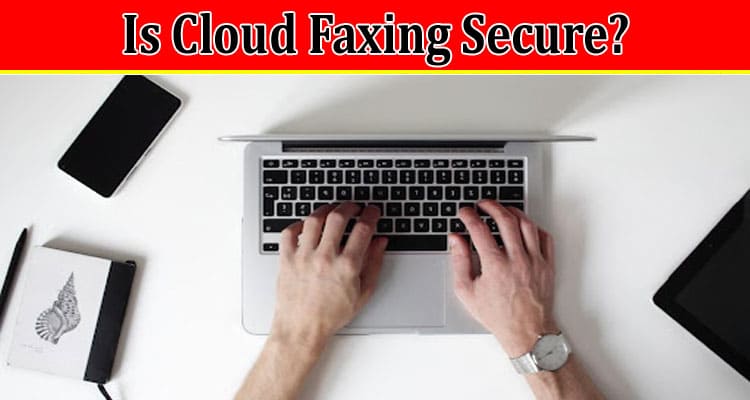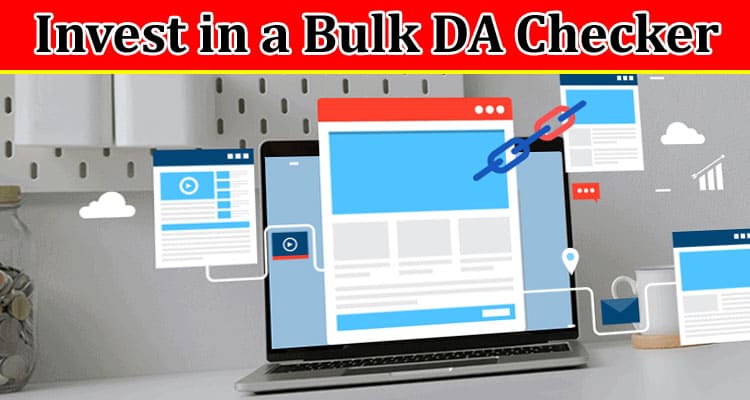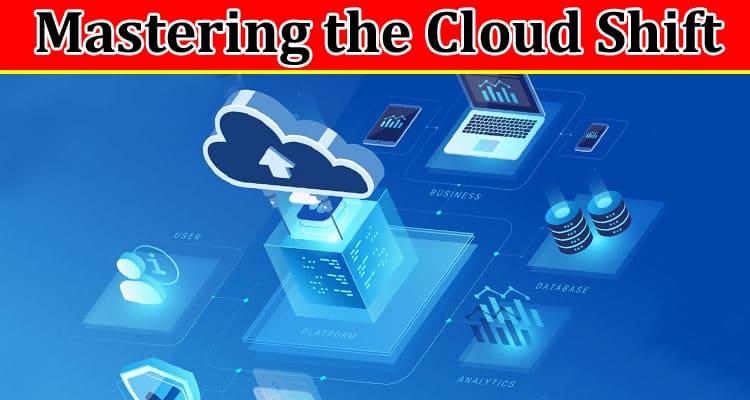In today’s digital age, businesses are constantly looking for ways to optimize their operations and ensure the safety of their data. The advent of cloud computing has opened up a world of possibilities, and one area that has seen significant innovation is faxing. Cloud faxing, also known as internet faxing or virtual faxing, is a modern approach to traditional faxing that allows users to send and receive faxes using digital platforms and the internet. Keep reading to learn more about is cloud faxing secure.
Exploring the Concept of Cloud Faxing
Alt text: An overhead view of someone typing using a cloud-based fax service on their laptop.
A cloud faxing service allows for sending and receiving faxes through an online portal or email, which offers convenience for businesses. It’s a bridge between the physical and digital worlds that helps businesses handle their fax communication effortlessly. This modern way of faxing eliminates traditional fax machines and leverages digital technology and cloud storage.
Cloud faxing works with the internet, allowing users to fax without the traditional phone line or fax machine. Faxes sent and received get stored on a secure online server accessible anytime, anywhere, given you have Internet access. This technological shift means businesses can send and receive many faxes without the inconvenience of physical papers or the need for extensive storage space.
Understanding the Security Measures in Cloud Faxing
The main goal of cloud faxing providers is to protect your faxed documents. One method adopted to attain this level of security is the use of Transport Layer Security (TLS) and Secure Sockets Layer (SSL) for data transmission. Moreover, most services follow strict compliance standards to the Health Insurance Portability and Accountability Act (HIPAA), which demands high levels of security. This level of protection is crucial to maintaining client confidentiality and avoiding potential legal ramifications that may arise due to a data breach.
Cloud faxing systems also implement additional security measures, such as two-factor authentication (2FA) and encryption, for added protection. These steps further solidify the security of cloud faxing, making it more secure than traditional faxing in many ways.
The Role of Encryption in Cloud Faxing
Encryption plays a significant role in maintaining the security of cloud faxing. It ensures that your data remains unreadable and inaccessible during transmission until it reaches the receiving end. The transmitted information will be encrypted text, which, if intercepted, can’t be read without the decryption key.
Many cloud faxing services incorporate end-to-end encryption in their service. End-to-end encryption goes beyond just encrypting the data during transmission; it covers every touchpoint in the process, from when a document is faxed to when it is read on the other side. This diligence adds an extra layer of security, ensuring the safety and integrity of data transmitted through cloud faxing.
Relevance of Cloud Faxing Today
Alt text: A person typing on a laptop utilizing cloud faxing for their business.
Given the increasing need for digital transformation in businesses today, cloud faxing is becoming more relevant and integral. Not only does it eliminate the need for traditional fax machines, but it also improves business efficiency. Its flexibility, potential to save costs, and addressing environmental concerns have made it a preferable option for many businesses.
Cloud faxing security is continuously evolving and strengthening to keep up with ever-progressing security threats in the cyber world. As such, businesses can remain confident that their sensitive information is well protected in a secure and controlled environment, provided they choose a client-serving provider.
The security of cloud faxing is a complex topic that balances new technology innovations with ongoing concerns about data protection and compliance. Companies should explore secure cloud faxing options for a thoroughly secure communication method. These provide the benefits of advanced technology with the assurance of data protection.





